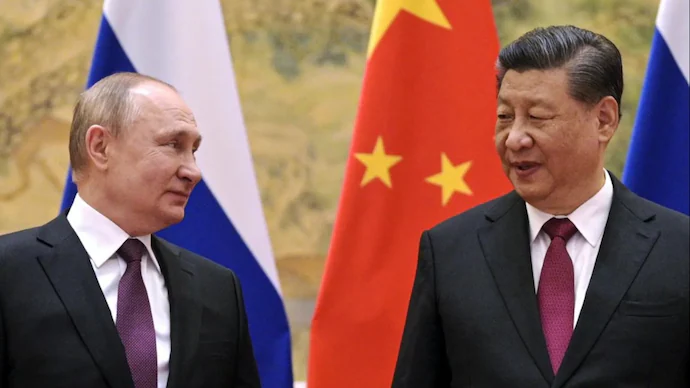The Chinese do not act ‘spontaneously’. And certainly not Xi Jinping. Especially when he is talking to a world leader in front of the camera. Every step, including where to stand, seating arrangement, manner of greeting, even the angle of the handshake or the intensity of the handshake, will be intentional and purposeful.
So, when Xi was seen in a rare embrace as he bid farewell to Russian President Vladimir Putin last Friday, it made global news, with even the White House forced to react. This embrace, which seemed awkward and even robotic, was meant to convey a certain message. What was the message?
Before we get to that, let’s get one thing straight. China attaches great importance to symbolism and optics. Almost nothing is left to chance. ,
Recall, for example, how US Secretary of State Antony Blinken was shooed aside while his host, Xi, sat at the head of the table in an unusual seating arrangement during their recent meeting in Beijing. Blinken had called on Xi to ‘stabilize’ bilateral ties but returned home empty-handed on his main objective, persuading the general secretary of the Communist Party of China to resume high-level military-to-military communications . He felt colder than a winter evening on Lake Baikal.
Xi’s power move, which made Blinken resemble a low-ranking official of a tributary state seeking favors from the emperor of the Middle Kingdom, was designed to convey China’s resentment toward the US and oust America’s top diplomat. Reflected the vengeance given. For example, it was a sharp contrast to Xi’s behavior toward Bill Gates last year, when the Microsoft co-founder and Xi sat together with a small table between them, indicating warmth and commonality.
The German chancellor was in Beijing last month to lobby the Chinese president to ensure better market access for German companies in China and to put pressure on Xi over Russia. In one of the frames released by Chinese state media, coincidentally, the two leaders were walking through a park in Beijing, where Scholz, with folded hands, looks apologetic, while Xi is demonstrating authority and control. It is no coincidence that China maintains a tight grip on Germany, which appears weak and unable to deal with the security and economic challenges posed by Beijing.
This takes us to the Xi-Putin embrace initiated by the Chinese President. As I mentioned earlier, this is a calculated move by Xi – who is not known for cutting protocol by such physical displays – that took even Putin by surprise and the Russian president responded with his own gesture. He replied, waiting for Xi to sit first.
These highly unusual and symbolic gestures reflect the underlying trust and deep bond between the two leaders, but more than that these steps are meant to show the primary audience in the West that China and Russia are interconnected, and that it will not be their It is easy to create a rift, as Nixon and Kissinger did in the 1970s. it was then. Now the winds have changed.
One measure of closeness is the remarkable continuity in Xi-Putin messages. In February 2022, just 20 days before Putin’s tanks rolled into Ukraine, the two countries announced a ‘no borders’ partnership. The West is still debating what this means. Nearly a year later in Moscow, Xi held Putin’s hand at the Kremlin door before departure and delivered comments that are pregnant with everlasting import: “There are changes right now – the likes of which we haven’t seen for 100 years – and we are they. People are driving these changes together…”
The sincerity displayed during Putin’s recent visit to China was self-explanatory, beyond the 21-gun salute, welcome at the Great Hall of the People or the bizarre sight of over-excited children jumping up and down at the sight of Putin.
The pomp and pageantry may seem dramatic, but it is yet another sign of the fact that the Ukraine war has brought two revisionist powers closer, their tight alignment driven by an existential need to push back against Western attempts at control and a clean sweep. Relationships need to be developed. Combination of interests.

